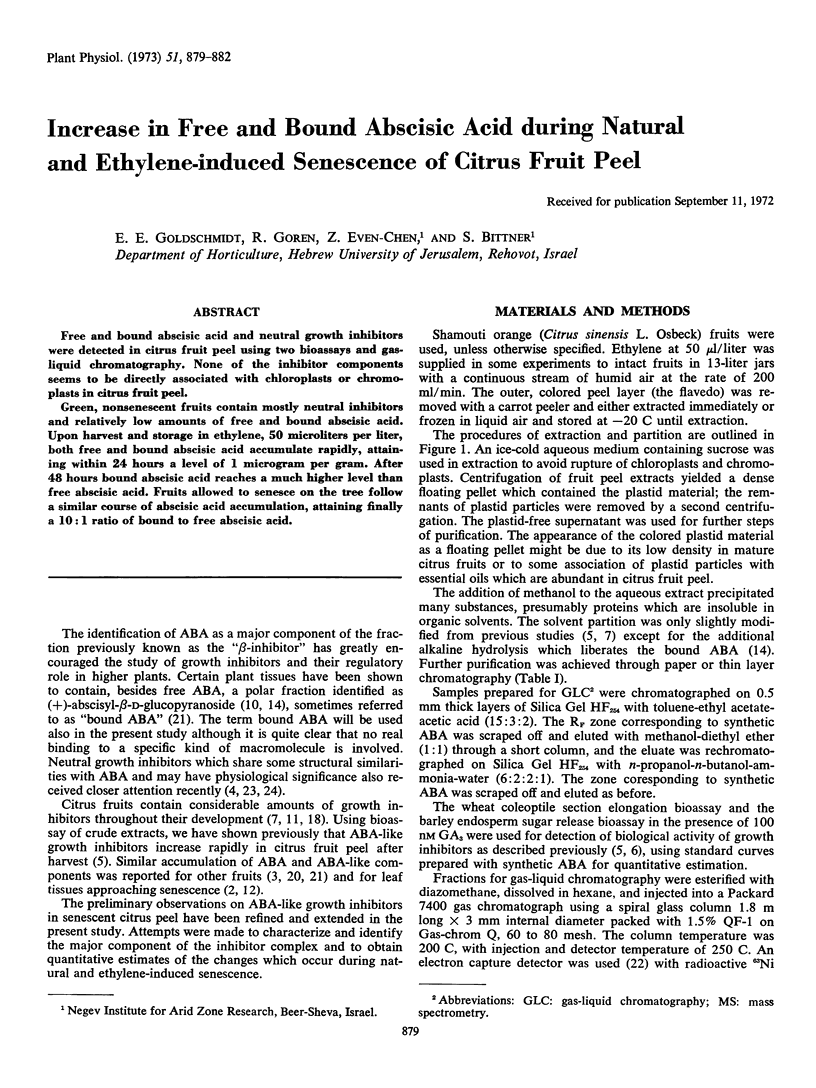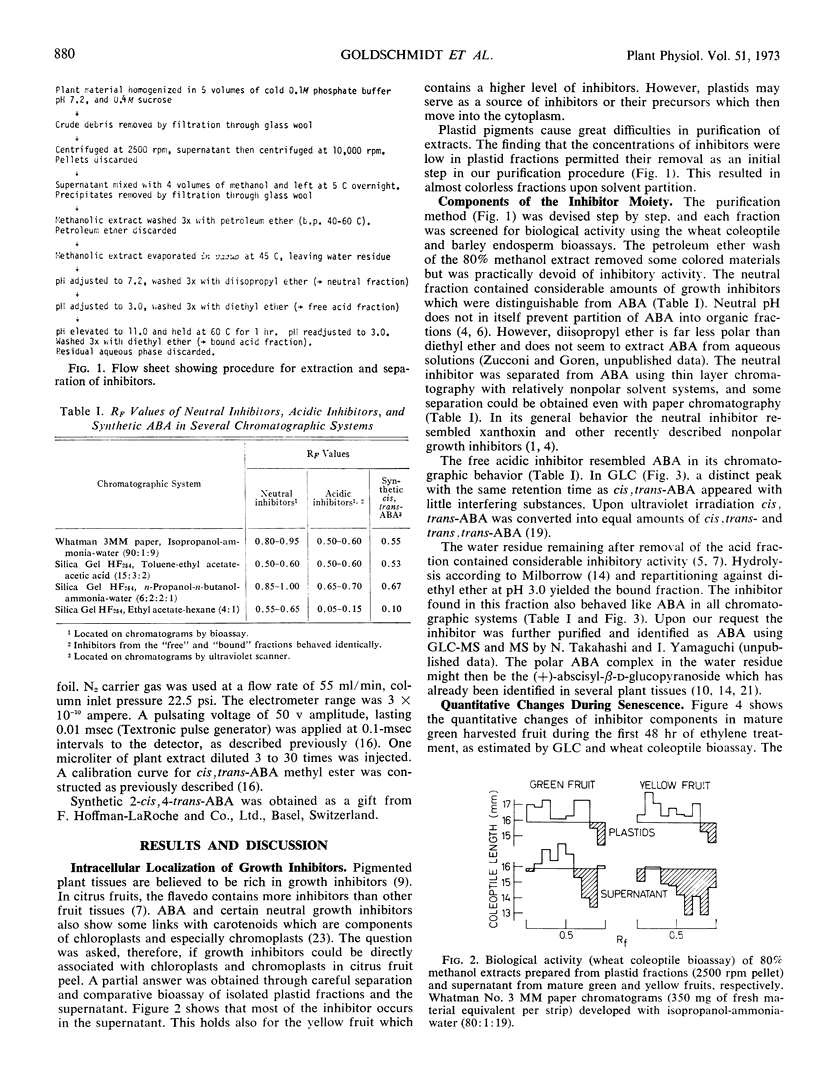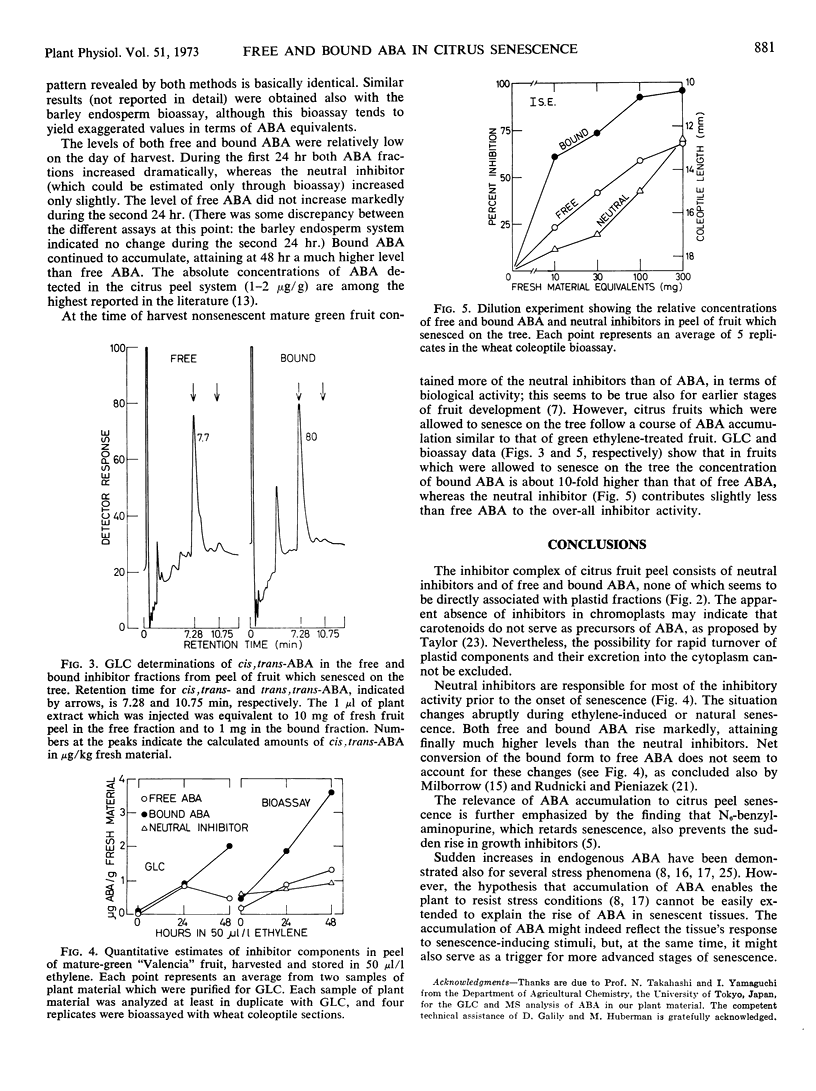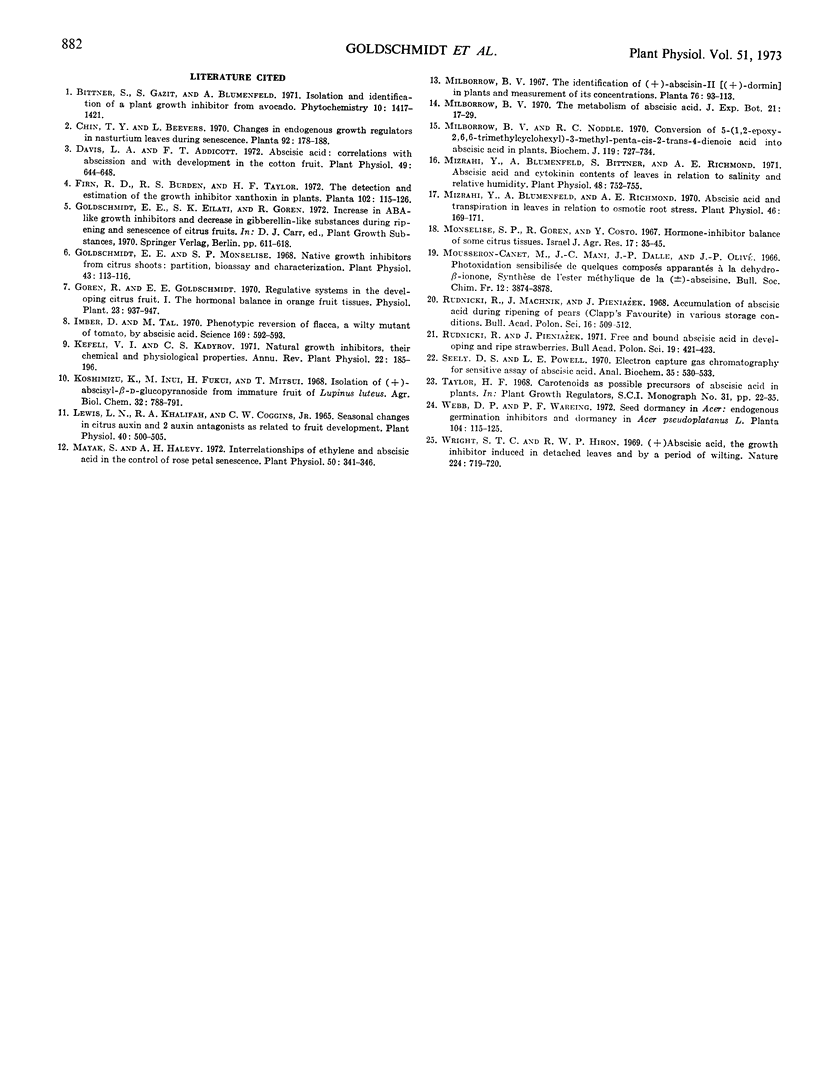Abstract
Free and bound abscisic acid and neutral growth inhibitors were detected in citrus fruit peel using two bioassays and gasliquid chromatography. None of the inhibitor components seems to be directly associated with chloroplasts or chromoplasts in citrus fruit peel.
Green, nonsenescent fruits contain mostly neutral inhibitors and relatively low amounts of free and bound abscisic acid. Upon harvest and storage in ethylene, 50 microliters per liter, both free and bound abscisic acid accumulate rapidly, attaining within 24 hours a level of 1 microgram per gram. After 48 hours bound abscisic acid reaches a much higher level than free abscisic acid. Fruits allowed to senesce on the tree follow a similar course of abscisic acid accumulation, attaining finally a 10: 1 ratio of bound to free abscisic acid.
Full text
PDF



Selected References
These references are in PubMed. This may not be the complete list of references from this article.
- Davis L. A., Addicott F. T. Abscisic Acid: correlations with abscission and with development in the cotton fruit. Plant Physiol. 1972 Apr;49(4):644–648. doi: 10.1104/pp.49.4.644. [DOI] [PMC free article] [PubMed] [Google Scholar]
- Goldschmidt E. E., Monselise S. P. Native growth inhibitors from citrus shoots. Partition, bioassay, and characterization. Plant Physiol. 1968 Jan;43(1):113–116. doi: 10.1104/pp.43.1.113. [DOI] [PMC free article] [PubMed] [Google Scholar]
- Imber D., Tal M. Phenotypic reversion of flacca, a wilty mutant of tomato, by abscisic Acid. Science. 1970 Aug 7;169(3945):592–593. doi: 10.1126/science.169.3945.592. [DOI] [PubMed] [Google Scholar]
- Lewis L. N., Khalifah R. A., Coggins C. W. Seasonal Changes in Citrus Auxin and 2 Auxin Antagonists as Related to Fruit Development. Plant Physiol. 1965 May;40(3):500–505. doi: 10.1104/pp.40.3.500. [DOI] [PMC free article] [PubMed] [Google Scholar]
- Mayak S., Halevy A. H. Interrelationships of ethylene and abscisic Acid in the control of rose petal senescence. Plant Physiol. 1972 Sep;50(3):341–346. doi: 10.1104/pp.50.3.341. [DOI] [PMC free article] [PubMed] [Google Scholar]
- Milborrow B. V., Noddle R. C. Conversion of 5-(1,2-epoxy-2,6,6-trimethylcyclohexyl)-3-methylpenta-cis-2-trans-4-dienoic acid into abscisic acid in plants. Biochem J. 1970 Oct;119(4):727–734. doi: 10.1042/bj1190727. [DOI] [PMC free article] [PubMed] [Google Scholar]
- Mizrahi Y., Blumenfeld A., Bittner S., Richmond A. E. Abscisic Acid and cytokinin contents of leaves in relation to salinity and relative humidity. Plant Physiol. 1971 Dec;48(6):752–755. doi: 10.1104/pp.48.6.752. [DOI] [PMC free article] [PubMed] [Google Scholar]
- Mizrahi Y., Blumenfeld A., Richmond A. E. Abscisic Acid and transpiration in leaves in relation to osmotic root stress. Plant Physiol. 1970 Jul;46(1):169–171. doi: 10.1104/pp.46.1.169. [DOI] [PMC free article] [PubMed] [Google Scholar]
- Seeley S. D., Powell L. E. Electron capture-gas chromatography for sensitive assay of abscisic acid. Anal Biochem. 1970 Jun;35(2):530–533. doi: 10.1016/0003-2697(70)90218-6. [DOI] [PubMed] [Google Scholar]


